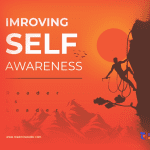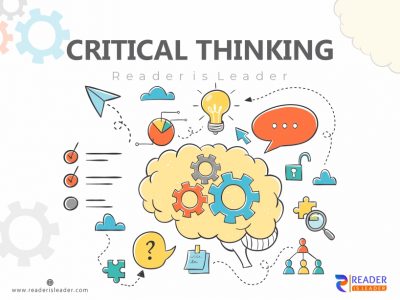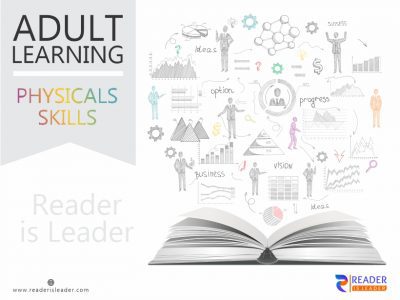Creativity In
Problem Solving
This course will provide participants with an overview of the entire Creative Problem-solving process and tools they use daily.

After completion of this course, the candidate will be able to cover the following..
For Course Benefits, please watch this Video or Read below….
[video_popup url=”https://www.youtube.com/watch?v=JvSVknkkCh8″ text=”” title=”” auto=”” n=”1″ p=”” wrap=”1″ img=”https://courses.readerisleader.com/wp-content/uploads/2023/05/hnhjk.png”]
- Enhanced Problem-Solving Skills:
The online course on Creativity in Problem Solving enhances learners’ problem-solving abilities. They develop innovative thinking techniques and creative approaches to tackle complex problems, enabling them to generate unique solutions.
- Improved Decision-Making:
The course focuses on improving decision-making skills through creative problem-solving. Learners gain the ability to analyze situations from different perspectives, think critically, and make informed decisions that address underlying issues effectively.
- Out-of-the-Box Thinking:
Creativity in Problem Solving training encourages out-of-the-box thinking. Learners develop the skill to challenge conventional wisdom, explore unconventional solutions, and approach problems with fresh perspectives, fostering innovation and breakthrough ideas.
- Effective Collaboration:
The course emphasizes the value of collaborative problem-solving. Learners gain skills to engage in brainstorming sessions, leverage diverse perspectives, and collaborate effectively with others, leading to more comprehensive and innovative problem-solving outcomes.
- Increased Adaptability:
Creativity in Problem Solving training enhances learners’ adaptability. They gain the ability to embrace change, adapt their thinking to new situations, and find creative solutions in dynamic and uncertain environments.
- Enhanced Analytical Skills:
The course strengthens learners’ analytical skills within the context of problem-solving. They develop the ability to break down complex problems, identify patterns, and apply logical reasoning, enabling them to approach problem-solving in a structured and systematic manner.
- Improved Innovation Mindset:
Creativity in Problem Solving training cultivates an innovation mindset. Learners develop a proactive approach to problem-solving, embrace experimentation, and have a willingness to take calculated risks, fostering a culture of innovation within their work environment.
- Enhanced Communication Skills:
The course emphasizes effective communication in problem-solving. Learners gain skills to articulate ideas, listen actively, and collaborate with others, enabling them to effectively convey their creative solutions and gain support for their ideas.
- Increased Confidence:
Creativity in Problem Solving training boosts learners’ confidence in their problem-solving abilities. They gain the belief in their creative potential and develop the confidence to explore unconventional approaches, leading to greater self-assurance in tackling complex problems.
- Resilience and Persistence:
The course promotes resilience and persistence in problem-solving. Learners develop the mindset to persevere in the face of challenges, learn from failures, and adapt their approaches until they find effective solutions.
- Enhanced Leadership Skills:
Creativity in Problem Solving training enhances learners’ leadership skills. They gain the ability to foster a culture of creativity and innovation, inspire others to think creatively, and guide teams through complex problem-solving processes.
- Improved Resource Management:
The course emphasizes resource optimization in problem-solving. Learners develop skills to identify and leverage available resources effectively, including knowledge, technology, and human capital, to find creative and efficient solutions.
- Increased Customer Satisfaction:
Creativity in Problem Solving training leads to increased customer satisfaction. Learners develop the ability to identify customer needs, think creatively to address them, and provide innovative solutions that exceed customer expectations.
- Enhanced Critical Thinking:
The course strengthens learners’ critical thinking skills. They develop the ability to evaluate information objectively, identify assumptions, and consider multiple perspectives, enabling them to make well-informed decisions and solve complex problems effectively.
- Effective Risk Management:
Creativity in Problem Solving training incorporates effective risk management techniques. Learners gain skills to identify potential risks, assess their impact, and develop mitigation strategies, ensuring that risks are proactively managed during problem-solving processes.
- Improved Efficiency:
The course emphasizes efficiency in problem-solving. Learners gain skills to identify the root causes of problems, eliminate unnecessary steps, and find streamlined solutions, leading to improved efficiency and productivity in problem-solving efforts.
- Enhanced Innovation Culture:
Creativity in Problem Solving training contributes to building an innovation culture within organizations. Learners become champions of innovation, promoting a mindset of continuous improvement, creative thinking, and experimentation.
- Increased Job Satisfaction:
The course promotes job satisfaction through creative problem-solving. Learners experience a sense of fulfillment when they successfully apply their creative solutions to solve challenging problems, leading to increased job satisfaction and engagement.
- Transferable Skills:
Creativity in Problem Solving training provides learners with transferable skills applicable to various aspects of life and work. They develop skills such as adaptability, critical thinking, and innovation, which can be valuable in different roles and scenarios.
- Career Advancement Opportunities:
Proficiency in creative problem-solving opens doors to career advancement. Learners who demonstrate excellence in problem-solving and innovative thinking become valuable assets to organizations and can pursue roles such as innovation managers, consultants, or project leaders, enhancing their career prospects.
Creativity in Problem Solving Modules
In this course, you will get 12 Modules which are describing all aspects greatly
- Module One: Getting Started
- Workshop Objectives
- Module Two: The Problem-Solving Method
- What is a Problem?
- What is Creative Problem Solving?
- What are the Steps in the Creative Solving Process?
- Case Study
- Module Three: Information Gathering
- Understanding Types of Information
- Identifying Key Questions
- Methods of Gathering Information
- Case Study
- Module Four: Problem Definition
- Defining the Problem
- Determining Where the Problem Originated
- Defining the Present State and the Desired State
- Stating and Restating the Problem
- Analyzing the Problem
- Writing the Problem Statement
- Case Study
- Module Five: Preparing For Brainstorming
- Identifying Mental Blocks
- Removing Mental Blocks
- Stimulating Creativity
- Case Study
- Module Six: Generating Solutions (I)
- Brainstorming Basics
- Brainwriting and Mind Mapping
- Duncker Diagrams
- Case Study
- Module Seven: Generating Solutions (II)
- The Morphological Matrix
- The Six Thinking Hats
- The Blink Method
- Case Study
- Module Eight: Analyzing Solutions
- Developing Criteria
- Analyzing Wants and Needs
- Using Cost/Benefit Analysis
- Case Study
- Module Nine: Selecting A Solution
- Doing a Final Analysis
- Paired Comparison Analysis
- Analyzing Potential Problems
- Case Study
- Module Ten: Planning Your Next Steps
- Identifying Tasks
- Identifying Resources
- Implementing, Evaluating, and Adapting
- Case Study
- Module Eleven: Recording Lessons Learned
- Planning the Follow-Up Meeting
- Celebrating Successes
- Identifying Improvements
- Case Study
- Module Twelve: Wrapping Up
Be Creative with Quizes
Each Module is finishing with its quiz & hence you will get to review your Modules in the form of 100 questions.
- Module Two Review Questions
- What is the problem?
- Which step is not included in the Creative Problem Solving Process?
- How many steps are there in the Creative Problem Solving Process?
- Select the correct order for the steps within the Creative Problem Solving Process
- What does the Problem Definition step entail?
- Which of these statements is false?
- What is another label for a problem?
- When is the creative problem-solving process at work?
- What does analyzing the possible solutions step entail?
- Which of the following statements is true?
- Module Three Review Questions
- When tackling a problem, one should:
- Which of these questions is not an Identifying Key Question?
- Which of the following is not a method of gathering information?
- How many different types of Information are there?
- Which is a type of Information?
- What is the concept?
- What is a Procedure?
- What are Facts?
- Which statement is true?
- It is important to ask:
- Module Four Review Questions
- A problem statement should:
- “What” questions help to:
- What does Stating and Restating a Problem achieve?
- What is the difference between the Present and the Desired States?
- The questions you should ask about the Problem should:
- Why is defining a problem the first step of problem-solving?
- When defining a problem, you should:
- Spot the tool for defining a problem:
- Questions to clarify a problem should:
- What are the Extent questions?
- Module Five Review Questions
- Identifying Mental Blocks does not include:
- What are the Cultural Differences?
- Which of the following helps remove Mental Blocks?
- Stimulating creativity can be achieved by:
- To maintain creativity, one should not:
- What does brainstorming achieve?
- What are examples of Distractions?
- What is the first technique to use when removing mental blocks?
- Which is the best technique for removing mental blocks?
- Which statement is true about Creativity:
- Module Six Review Questions
- Which of the following is NOT an idea-generating technique?
- The following is a brainstorming basic:
- Which of the following statements is true for Brain-writing?
- Mind Mapping is:
- Duncker Diagrams use the following States to achieve solutions:
- Duncker Diagrams should never include:
- When Mind Mapping, one should:
- The Brain-writing Grid should contain:
- Spot a rule for Brainstorming:
- Which statement is false?
- Module Seven Review Questions
- Which statement is FALSE with regards to the Morphological Matrix?
- How many Hats are there in Dr. Edward de Bono’s book?
- Which of the following is a Thinking Hat?
- The Blink Method advocates:
- The Yellow Hat is associated with:
- The adaptive subconscious is:
- For complex problems:
- What is entered into the Morphological Matrix grid?
- The Red Hat denotes:
- The Pink Hat denotes:
- Module Eight Review Questions
- The criteria for an effective solution should NEVER consider:
- A Want may be defined as:
- Which statements are true of the Cost-Benefit Analysis?
- What is Trend?
- Which questions shouldn’t be asked when Developing Criteria?
- Which statement is TRUE of Costs?
- When Developing Criteria, you should:
- What is the Timing?
- What is true of needs?
- The valuations in the Cost-Benefit Analysis should:
- Module Nine Review Questions
- The following statement is true with regards to a Final Analysis:
- The Paired Comparison Analysis is useful for:
- Which questions should be asked when Analyzing Potential Problems?
- Which statement is false?
- If a problem is uncovered, you should:
- Using the Paired Comparison Analysis may:
- For each potential solution, one should:
- In the Paired Comparison Analysis, one should:
- Which statement is true:
- When assigning a number during the Paired Comparison Analysis:
- Module Ten Review Questions
- When identifying the tasks, one should:
- Which of the following is not an Identifiable Resource?
- When Implementing a solution, one should:
- Which resource is the most important?
- What is a non-critical task?
- Adjustments to the solution are necessary when:
- What is a critical task?
- What falls under equipment?
- What should one do after evaluating resources?
- Which statement is FALSE:
- Module Eleven Review Questions
- When planning a Follow-up meeting, you should:
- The purpose of a Follow-up meeting is:
- Why is it necessary to celebrate the success of the solution?
- Identifying Improvements for future solutions is useful because:
- Which of the following statements is false?
- What is the most important part of planning the Follow-up meeting?
- When Celebrating Successes, one should:
- When Identifying Improvements, one should:
- The following statement is TRUE:
- The most important phase of the Creative Problem Solving Procedure is:

- What is the requirement for this course?
The course is open to anyone who is interested in learning more about the subject matter, and there are no specific entry requirements to enroll.
- What much Time I need to Spend for completion of this course?
The course is divided into different modules, with an average study time ranging from 20 to 90 minutes per module as per your convenience. While you have the flexibility to allocate your preferred amount of time to each module, after buying you will have lifetime access to the course so you can log in and out of the course as per your schedule.
- When and Where I can Study this Course?
You can study this course at any time and anywhere of your choice, you have the convenience of logging in and out of the web-based course as often as you need. The course is compatible with all devices, including computers, tablets, and smartphones, allowing you to study even while on the go.
- How I can Pay for this Couse?
To make a payment for this course, you have the option to use several payment methods including Visa, MasterCard, and PayPal account. The website employs the latest SSL encryption technology to ensure that your payment details are kept safe and secure. All payments are processed securely by PayPal, providing an added layer of protection for your peace of mind.
- How soon I can have access to the course material?
You will have access to the course immediately after you make the payment. You will receive email confirmation of payment at the same time with full access to the course material.
- Can I earn a Certificate at the end of the course?
That’s Right! At the completion of the course, we will earn a Professional Certificate that can be a valuable addition to your career and personal achievements. This certificate will serve as evidence of the knowledge and skills you have gained through the course, and can help you demonstrate your expertise to current or potential employers.
- What is the validity of the Certificate?
Certificate is your achievement, which will remain with you forever. It doesn’t have any expiry or need any renewal. Enjoy the Course and Good Luck.
Downloads
Get life-time access for 53 Well Documented Downloadable Pages of this course
This Course Includes….
24/7 Student Support
End of Course Certification
Lifetime Access
Compatible with Modern Devices
You can have all of our courses for $99 Per Year, Click Here
Related Courses Below..
What is a Problem?
Any question or matter involving doubt, uncertainty, or difficulty. A question proposed for solution or discussion.
What is Creative Problem Solving?
Problem Solvers come up with innovative solutions rather than getting help with learning the answers or implementing standard procedures.
Get an early bird discount upto 50% by just enrolling today
Successfully Certifications
So far, we are indulging with 75 plus participants who are passionate to learn and improve Creativity In Problem Solving
Importance
Over the past few decades, psychologists and business people have discovered that successful Problem Solvers use the same process to identify and implement solutions to their problems. This process works for any issue, big or small.
Featured Modules
In this course there are 12 module and some of featured modules are

Generating Solutions

Analyzing Solutions

Selecting a Solution
About The Course
In this course, participants will define “Problem” and other situations that lend themselves to the Creative Problem-solving process. This course has introduced the concept of Problem-solving using a creative process. The approach we use in this course involves six steps.

Get an early bird discount upto 50% by just enrolling today
Reader Is Leader
Welcome to “Reader is Leader,” the premier destination for professional online courses designed to empower individuals with knowledge, skills, and expertise in various fields. We believe that reading is the gateway to becoming a leader in your industry, and our carefully curated courses are designed to help you unlock your full potential.
















